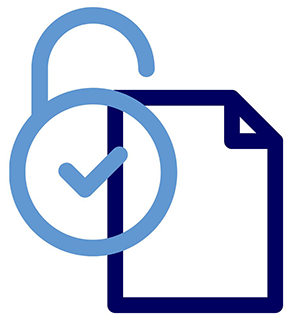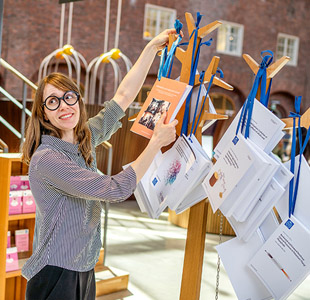About open access
Open access means that research results are published freely on the internet. There are several advantages with open access. Research results are distributed faster and have larger impact, which brings advantages both to the researchers and to the community, which benefits from the new research results. A common argument for open access is that research financed by public funds should be available to the public.
Freely available means that it is free for anyone to read, download, print, copy and distribute a work, provided that the creator is lawfully acknowledged. It is mainly research articles and conference papers that are published open access, but raw data, metadata, source material, digital images, multimedia etc. are also affected by open access.
The KTH policy for scholarly publishing urges researchers to aim at publishing open access.
Film about open access
In this video we give a short introduction to open access and how it helps democratize research. We also talk about barriers to publishing open access.
Open access and KTH
The KTH policy for scholarly publishing states that as a researcher you should aim at publishing open access. The proportion for KTH's publishing in open access appears in an annual open access report from the library.
- Open access report 2024 in web format: Open access report .
- Earlier reports can be found in DiVA: Open access reports in DiVA
Different options to publish open access
There are several ways to make your research open access.
Parallel publishing
Parallel publishing means that a copy, often the final accepted manuscript of a publication that has been published traditionally by a publisher is uploaded in an open institutional repository, for example DiVA , or a disciplinary repository. If you are employed by KTH you can use DiVA for parallel publishing. You can upload accepted copies of articles, conference proceedings, chapters from books or monographs. The terms for parallel publishing is not the same for all publishers or journals so make sure to check this in the database Open policy finder (formerly called Sherpa Romeo). You can also contact us at the library if you have questions about a publication.
Publishing in a journal
There are journals where the whole journal is open access and there are subscription journals where you can pay an article processing charge (APC) to make the article open.
Some open access journals have an article charge but there are journals that are both free to read and free to publish in.
There are a lot of open access journals. Directory of Open Access Journals (DOAJ) is a database containing quality controlled scientific journals.
KTH has agreements with a large number of publishers to reduce publishing costs and to increase the number of articles published open access at KTH. Read more about our open access agreements with publishers and how we can help you with the cost.
Creative Commons licences
If you want to be able to share your text, you can assign a Creative Commons license (CC licens) to it. The license clearly states which rights and restrictions apply. This is applicable when you publish through a publisher or when you for example upload a manuscript to DiVA.
The publishers usually suggest different CC BY-licences. It is important to know the difference between the licences. Read more about them at Creative Commons.


